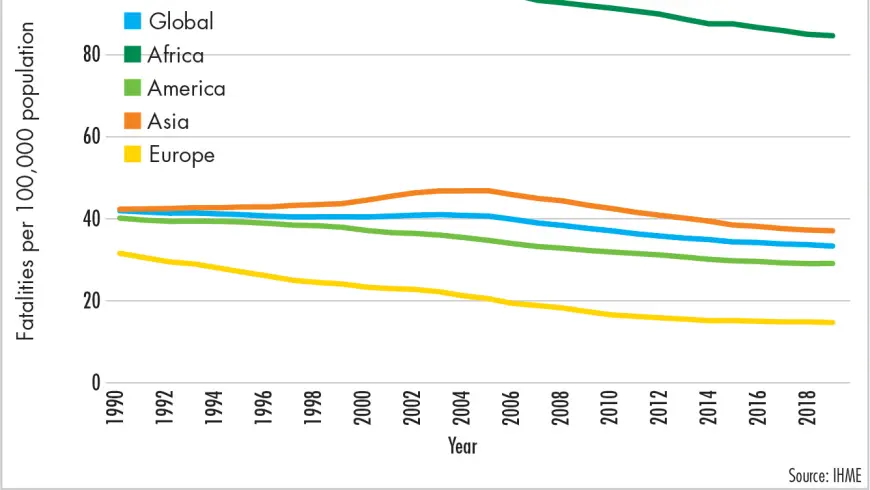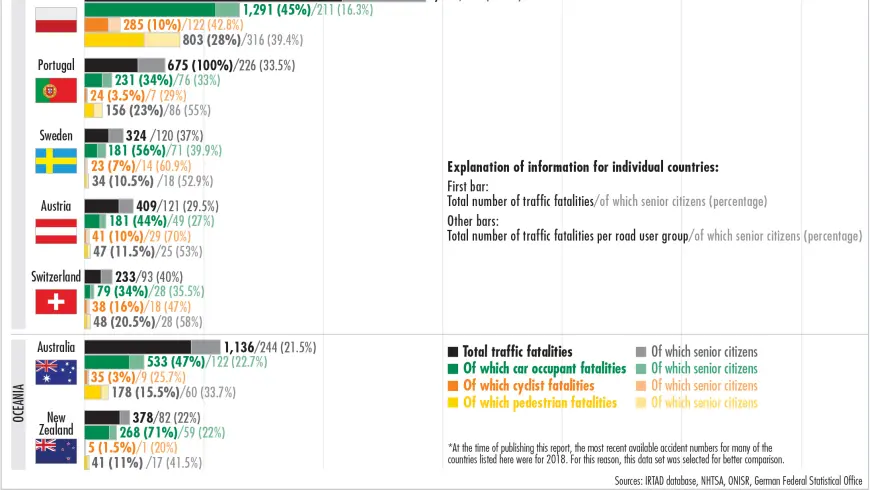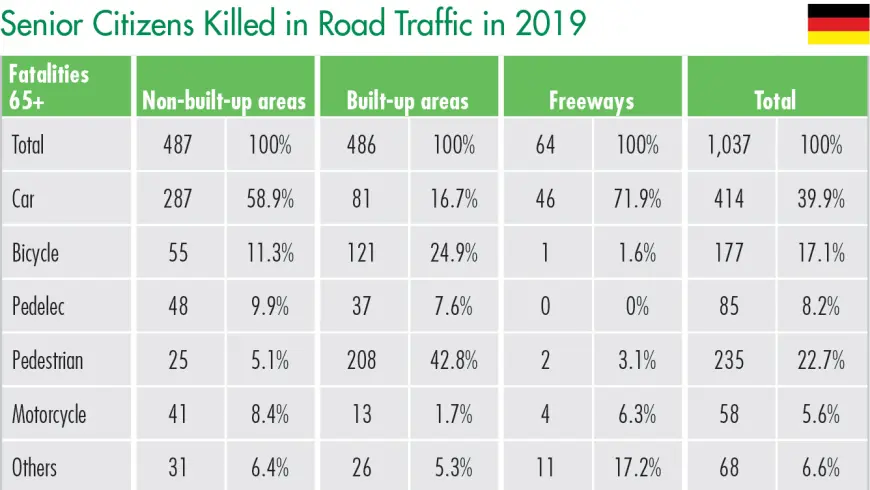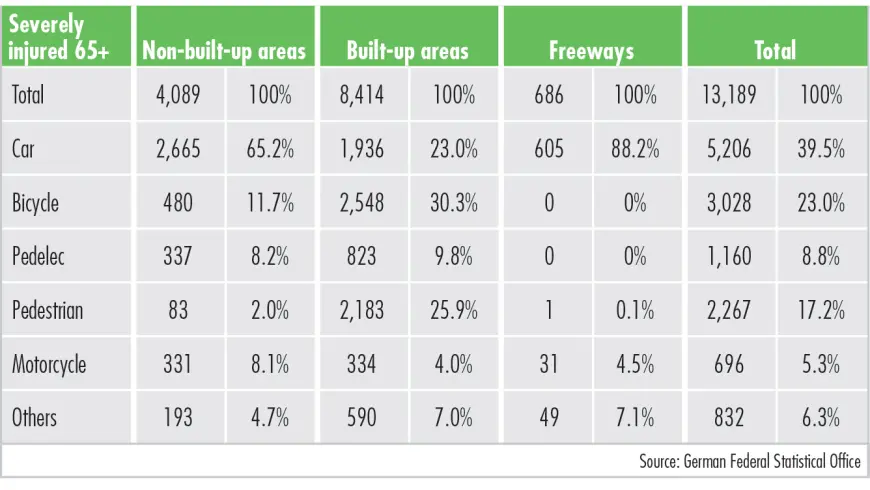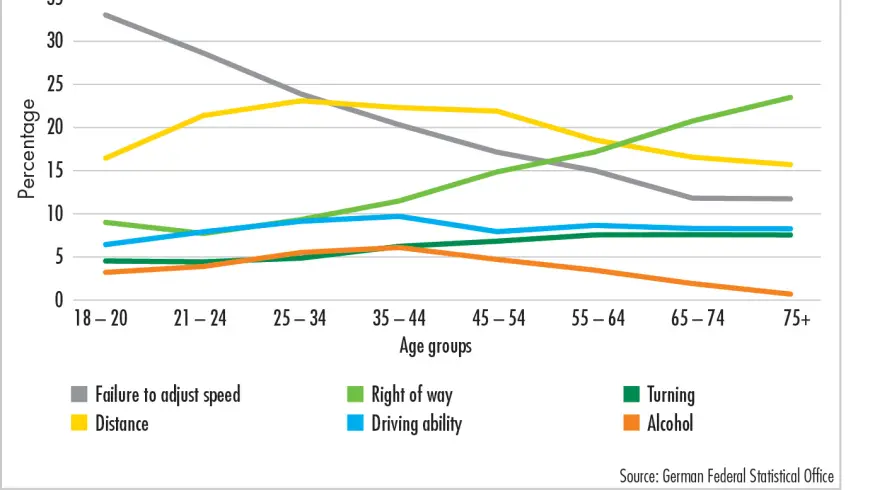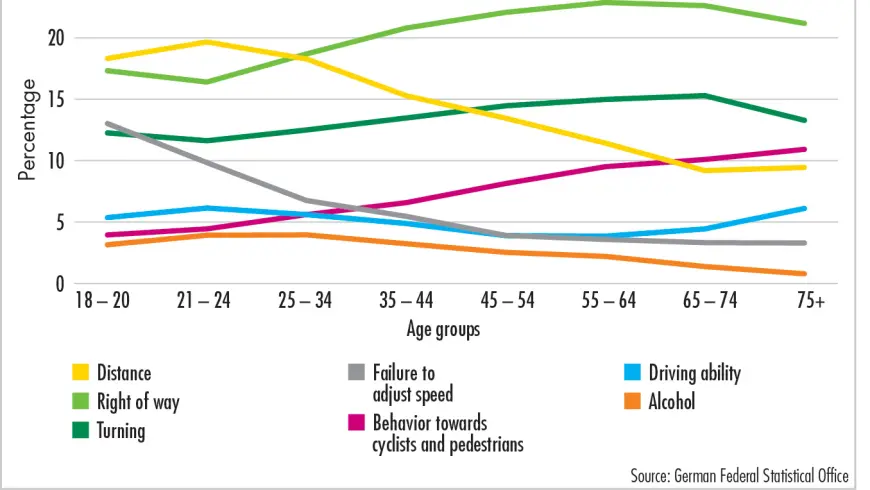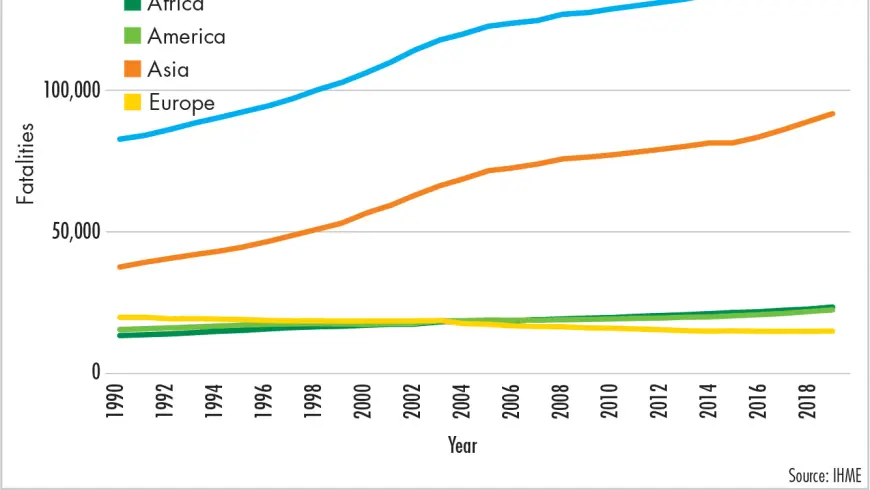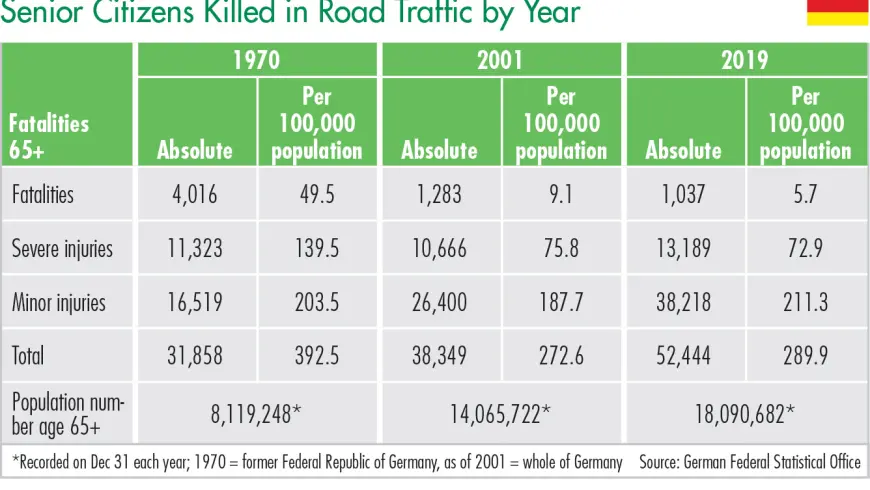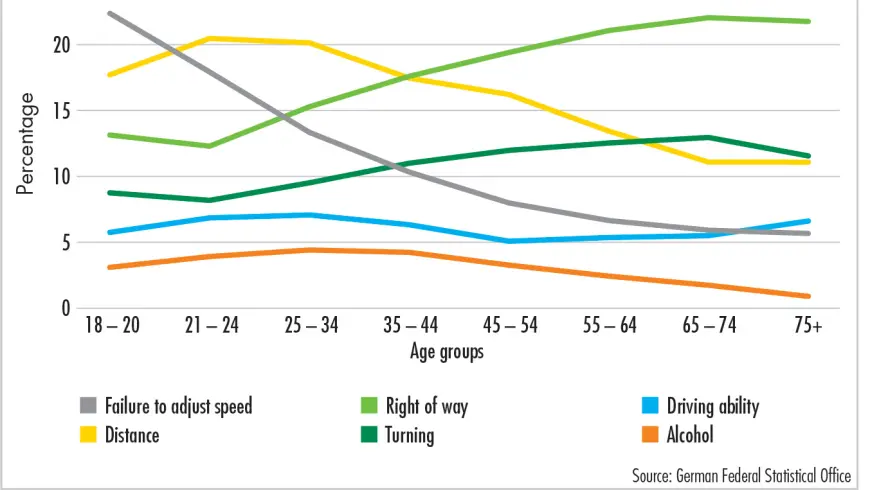The available infrastructure, population com-position, financial means, attitudes towards both safety in general and road safety in particular – when it comes to road traffic, there are sometimes significant differences between different countries, and even within individual coun-tries and regions. For example, rural road traffic is considerably different to that in urban areas. When comparing towns and cities, the factors that play a key role include the availability of local public transport, the bicycle path network, and the topography. The results will also differ depending on which modes of transport are included in the analysis. Increasing safety for cyclists requires different concepts than for car occupants. At the same time, care must be taken to ensure that any measures introduced to increase the safety of one group of road users do not impede the safety of others. Another factor to consider is the reason why these different groups use the roads in the first place. Are they commuting to and from work? Going shopping? Transporting products and goods across short/long distances? Or traveling purely for leisure reasons?
Within the context of all these factors, it is also essential to consider the age of the road users. As people advance in age, their circumstances and mobility-related needs change. Increased life experience changes people’s attitudes towards risk acceptance and risky behavior, not to mention their ability to anticipate critical situations. The boundaries of what is physically and cognitively possible for them also shift. If we are to achieve the objective of increasing road safety for everyone while also meeting the individual mobility requirements for each age group, a highly nuanced approach and precise analyses will be required. Comparing accident statistics between various age groups is a suitable means of identifying the different – or even identical – weak points in how they use the roads.
Looking at absolute figures can only offer a limited insight when focusing on the age of the road user. In most countries, there is a lack of reliable age-related data on road use, i.e. on the routes taken with different means of transport, the time spent in road traffic, and the usage frequency of urban and rural roads and freeways. However, taking an age group as a percentage of the pop-ulation and considering it in relation to the frequency of accident involvement or the severity of injuries provides important indications of how relevant these statistics are within traffic events as a whole and for long-term changes.
